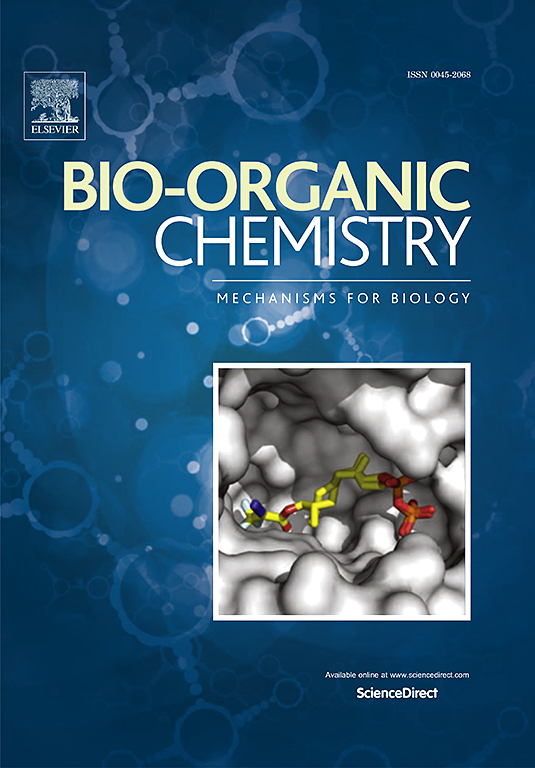Design, synthesis and anti-tumor activity of BTK inhibitor Orelabrutinib derivatives
IF 4.5
2区 医学
Q1 BIOCHEMISTRY & MOLECULAR BIOLOGY
引用次数: 0
Abstract
Bruton tyrosine kinase (BTK), a non-receptor tyrosine kinase falling within the Tec kinase family, forms an essential part of the B cell receptor (BCR) signaling cascade. It has come to be regarded as a potential drug target for addressing a wide range of diseases, with a particular focus on hematopoietic malignancies and autoimmune disorders related to B lymphocytes. In the present study, by uncovering the binding mechanisms of the inhibitor Orelabrutinib with BTK, we identified four crucial structural elements requisite for the inhibition. Using scaffold hopping strategies, 28 novel derivatives belonging to the tricyclic and pyridine amide series were designed and synthesized from the lead compound Orelabrutinib. The outcomes revealed that 11a and 11k were able to effectively restrain the growth and migration of the tumor cell TMD8 upon comparing their in vitro activities, meriting further examination.

布鲁顿酪氨酸激酶(BTK)是Tec激酶家族中的一种非受体酪氨酸激酶,是B细胞受体(BCR)信号级联的重要组成部分。它已被视为治疗多种疾病的潜在药物靶点,尤其是与 B 淋巴细胞有关的造血恶性肿瘤和自身免疫性疾病。在本研究中,通过揭示抑制剂 Orelabrutinib 与 BTK 的结合机制,我们发现了抑制 BTK 所必需的四个关键结构元素。利用支架跳跃策略,我们设计并合成了 28 种属于三环和吡啶酰胺系列的新型衍生物,这些衍生物来自先导化合物 Orelabrutinib。结果表明,通过比较体外活性,11a 和 11k 能够有效抑制肿瘤细胞 TMD8 的生长和迁移,值得进一步研究。
本文章由计算机程序翻译,如有差异,请以英文原文为准。
求助全文
约1分钟内获得全文
求助全文
来源期刊

Bioorganic Chemistry
生物-生化与分子生物学
CiteScore
9.70
自引率
3.90%
发文量
679
审稿时长
31 days
期刊介绍:
Bioorganic Chemistry publishes research that addresses biological questions at the molecular level, using organic chemistry and principles of physical organic chemistry. The scope of the journal covers a range of topics at the organic chemistry-biology interface, including: enzyme catalysis, biotransformation and enzyme inhibition; nucleic acids chemistry; medicinal chemistry; natural product chemistry, natural product synthesis and natural product biosynthesis; antimicrobial agents; lipid and peptide chemistry; biophysical chemistry; biological probes; bio-orthogonal chemistry and biomimetic chemistry.
For manuscripts dealing with synthetic bioactive compounds, the Journal requires that the molecular target of the compounds described must be known, and must be demonstrated experimentally in the manuscript. For studies involving natural products, if the molecular target is unknown, some data beyond simple cell-based toxicity studies to provide insight into the mechanism of action is required. Studies supported by molecular docking are welcome, but must be supported by experimental data. The Journal does not consider manuscripts that are purely theoretical or computational in nature.
The Journal publishes regular articles, short communications and reviews. Reviews are normally invited by Editors or Editorial Board members. Authors of unsolicited reviews should first contact an Editor or Editorial Board member to determine whether the proposed article is within the scope of the Journal.
 求助内容:
求助内容: 应助结果提醒方式:
应助结果提醒方式:


